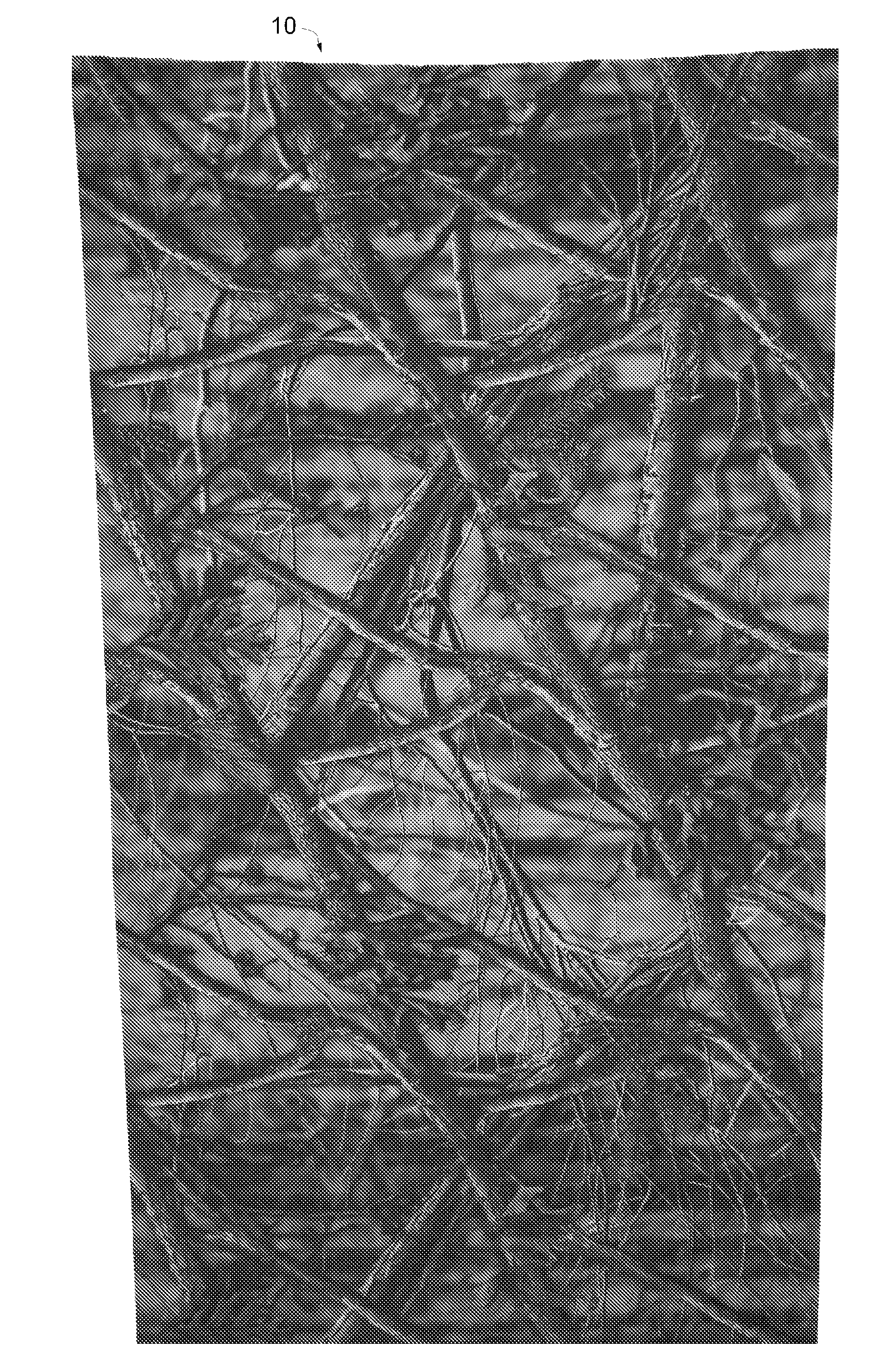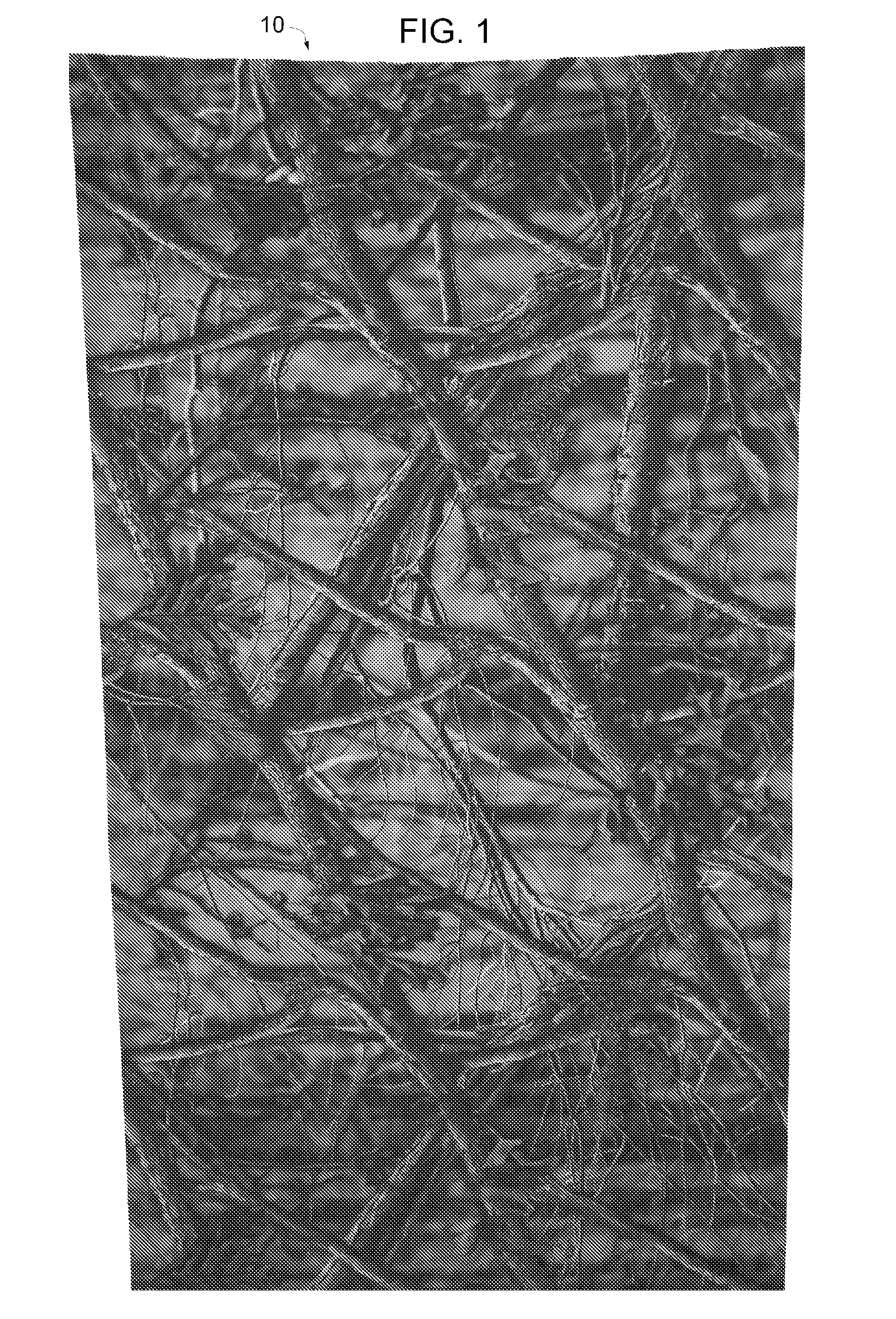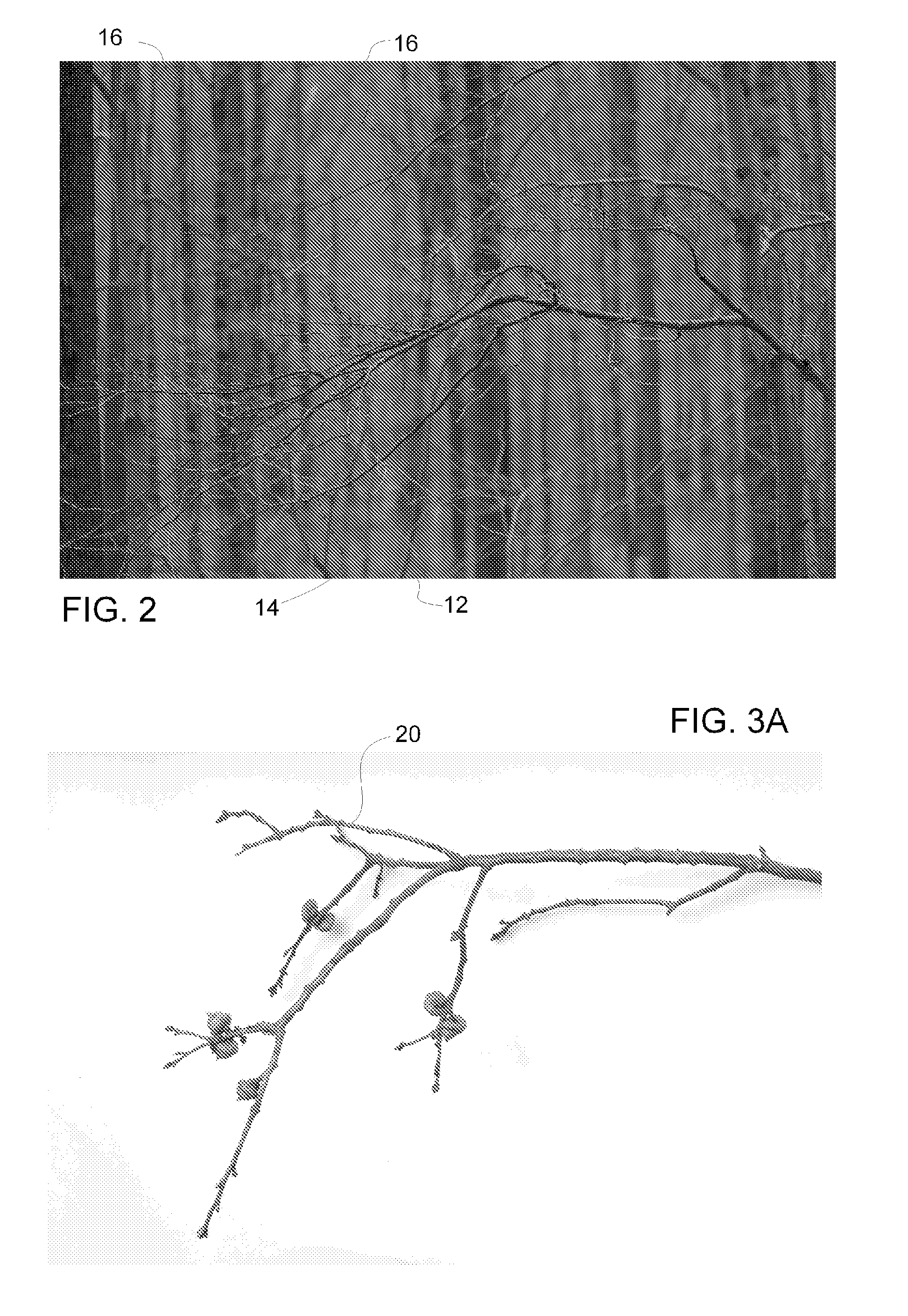Image processing for forming realistic stratum detritus detail in a camouflage pattern and a camouflage pattern formed thereby
a camouflage pattern and image processing technology, applied in the field of effective camouflage, can solve the problems of not being able to accurately match the woodland hunting area, and the pattern of camouflage uniforms not being typical
- Summary
- Abstract
- Description
- Claims
- Application Information
AI Technical Summary
Benefits of technology
Problems solved by technology
Method used
Image
Examples
Embodiment Construction
[0023]As described in detail below, image processing according to the invention forms realistic stratum detritus detail in a camouflage pattern 10 allowing for the development of effective hunter camouflage patterns 10. The patterns 10 of the invention are camouflage patterns including realistic stratum detritus detail in the camouflage pattern 10 as opposed to a “disruptive” camouflage patterns that tend not to include discernible images or elements but rather break up or disrupt the perceived outline of the subject (e.g. a ghillie suit).
[0024]FIG. 1 is a schematic image of a representative camouflage pattern 10 formed by the image processing according the present invention. The camouflage pattern 10 is formed of realistic photographic images, processed as described below, of natural elements found in the environment associated with the specific pattern 10. For example the pattern 10 shown is a woodland setting or genre and the image elements are those found in the woodland setting...
PUM
 Login to View More
Login to View More Abstract
Description
Claims
Application Information
 Login to View More
Login to View More - R&D
- Intellectual Property
- Life Sciences
- Materials
- Tech Scout
- Unparalleled Data Quality
- Higher Quality Content
- 60% Fewer Hallucinations
Browse by: Latest US Patents, China's latest patents, Technical Efficacy Thesaurus, Application Domain, Technology Topic, Popular Technical Reports.
© 2025 PatSnap. All rights reserved.Legal|Privacy policy|Modern Slavery Act Transparency Statement|Sitemap|About US| Contact US: help@patsnap.com



